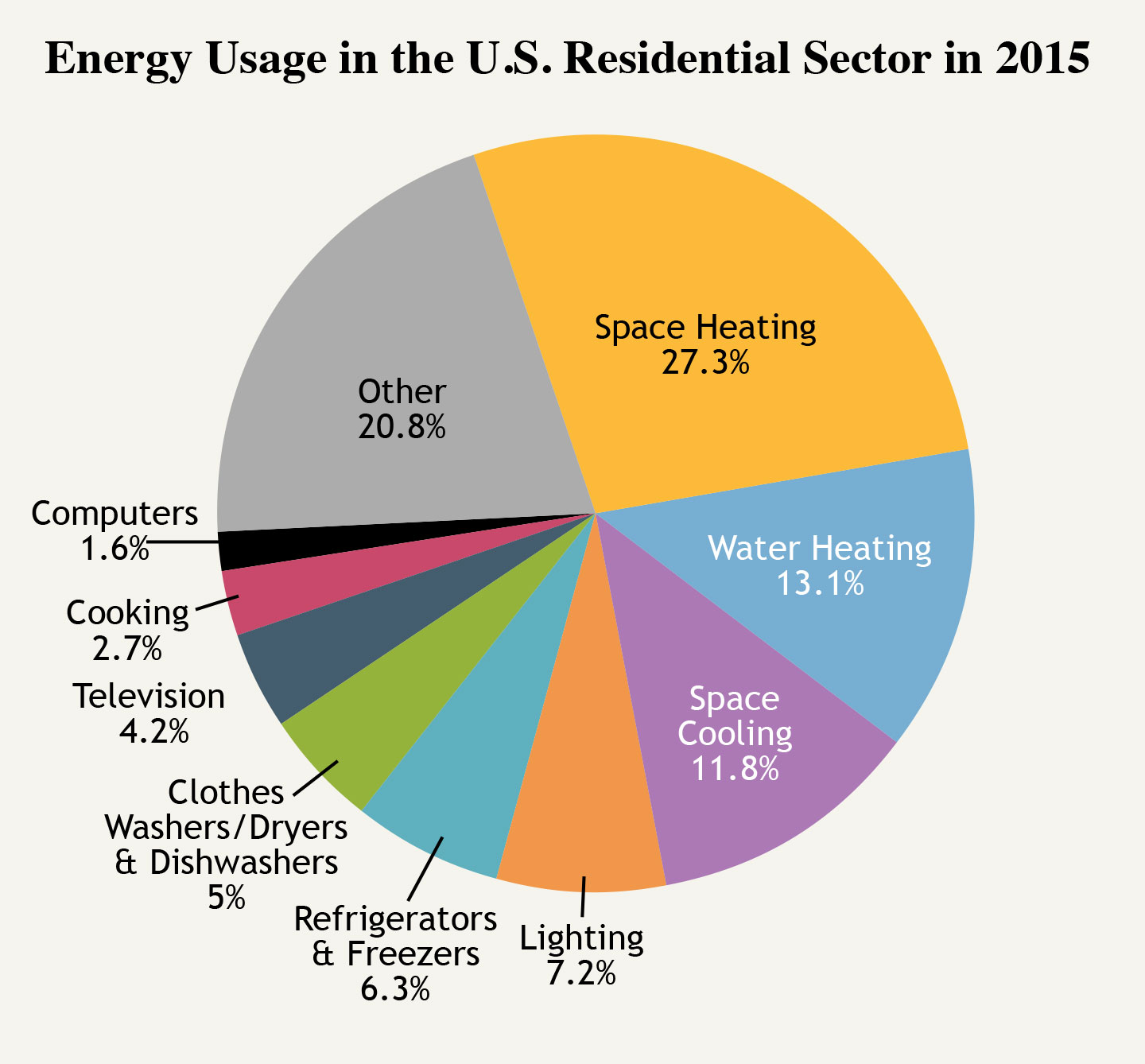Heating & Cooling
iStock.com/doomu
Heating & Cooling
The technologies that allow us to control the indoor climate are some of the largest consumers of energy in the residential and commercial sectors. But they are also a potential source of significant savings that may continue to grow if current trends persist.
In 1993, space heating and air conditioning together accounted for about 58% of total residential energy use in the United States. By 2011, they made up only 48%, thanks to more efficient equipment, better insulation in walls and windows, and population migration to warmer regions. Interestingly, however, total home energy consumption rose during the same period, owing in large measure to a substantial increase in the demand from appliances, electronics, and lighting, as well as an increase in the average size of single-family homes.
During the next 25 years, the U.S. Energy Information Administration projects that commercial and residential buildings will consume less energy for space heating: about 0.4% less per year. Both sectors will see only small changes in energy devoted to space cooling: about a 0.1% increase per year in the residential sector and 0.2% decrease per year in the commercial sector.
Total U.S. residential energy use in 2040 is projected to be lower than it was in 2015, whereas total commercial consumption will increase about 12%. Electricity will remain the predominant energy source for homes, which will grow in average size from 1,694 square feet to 1,857 square feet. Natural gas use will remain nearly constant from 2015 levels, with reductions in space heating but increases in water heating.
During the same period, energy use in the commercial sector is expected to rise—about 0.5% per year—assuming an annual growth in floor space of about 1% per year. The largest increases will occur in ventilation, water heating, and office equipment, among others.
Factoring in climate change and population shifts to warmer locations, the need for space heating is projected to decline appreciably during the next 25 years. Heating degree days (the number of degrees that indoor temperature is raised times the number of days in which the heating takes place) amounted to 4,084 in 2015. That figure is expected to drop on average by 4% to 3,914 in 2040.
At the same time, cooling degree days, which totaled 1,418 in 2015, are projected at 1,648 in 2040—an increase of about 0.4% per year.
The adoption of various technological and behavioral improvements is contributing to an increase in efficiency for residential space heating and cooling. Programmable thermostats allow homeowners to adjust the temperature of their home while they are away. Setting back thermostats 10°F to 15°F for eight hours per day—increasingly easy with automated temperature control—can lead to significant reductions in energy use.
Some unconventional technologies can offer very high efficiencies. One prominent example is the geothermal heat pump. These systems extract heat from underground in winter and make use of relatively cooler underground temperatures in summer. They are currently expensive: Purchase and installation may be several times the price of conventional heating and cooling systems of equivalent capacity. But according to the U.S. Department of Energy, the cost is offset by energy savings within 5 to 10 years, and system components have typical lifetimes of 25 to 50 years. At present, about 50,000 such systems are installed in the United States every year and that rate could change depending on government incentives and market forces.
Related topics
Source Material
- Real Prospects for Energy Efficiency in the United States (2010)
- Effective Tracking of Building Energy Use: Improving the Commercial Buildings and Residential Energy Consumption Surveys (2012)
- Overview and Summary of America’s Energy Future: Technology and Transformation (2010)
- Energy-Efficiency Standards and Green Building Certification Systems Used by the Department of Defense for Military Construction and Major Renovations (2013)

